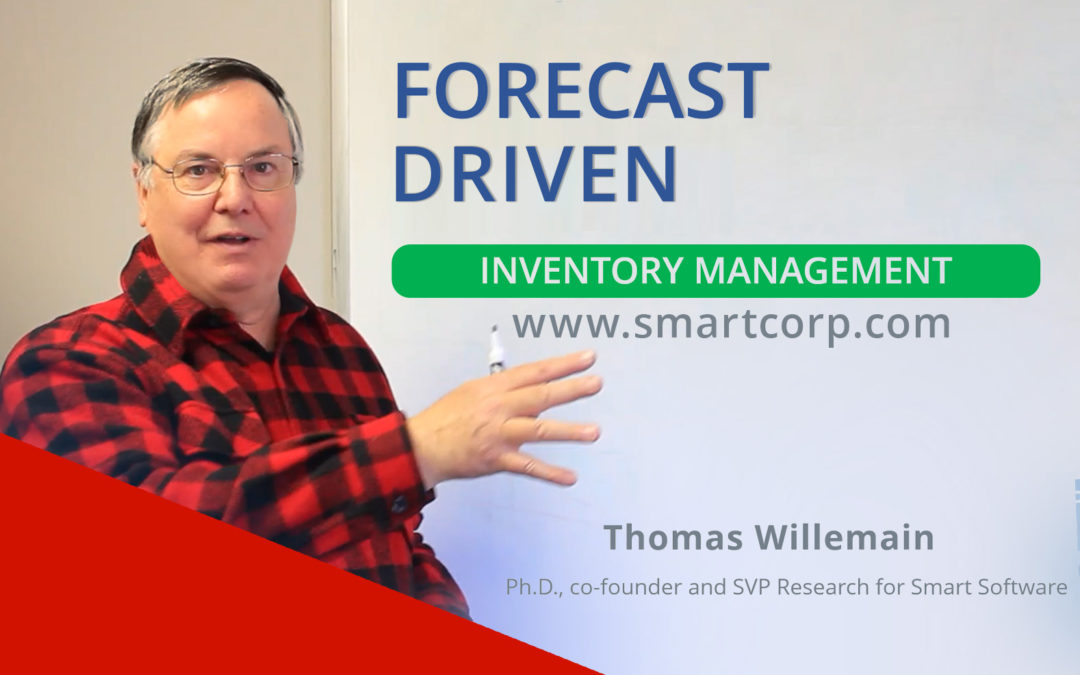Inventory control is the element of your inventory management system that involves what’s currently in stock. Inventory control requires being aware of the state and placement of all the items to maximize the merchandising process. With the correct technology in place, it is possible to monitor items more effectively, organize things better, generate accurate data and reports, optimize inventory spaces, and reduce overstocking and stockouts —all leading to increased revenue.
For a more efficient inventory setup, consider these best practices:
- Develop a well-organized floor layout. The warehouse must be ordered logically.
- Use clear signs and labels. Relevant labeling expedites delivery. Label racks, containers, and items clearly.
- Apply cycle counting. Cycle counting involves numbering tiny pieces across cycles.
- Using inventory optimization software helps you identify the least-cost service level based on your targeted stockout risk with minimal inventory carrying cost.
- Use warehouse management systems. Inventory control systems and Warehouse management systems streamline item tracking and decrease human error.

TOP 3 COMMON INVENTORY POLICIES
In this Video Dr. Thomas Willemain, co–Founder and SVP Research, defines and compares the three most used inventory control policies. These policies are divided into two groups, periodic review and continuous review. There is also a fourth policy called MRP logic or forecast based inventory planning which is the subject of a separate video blog that you can see here. These videos explain each policy, how they are used in practice and the pros and cons of each approach.

Backing into Safety Stock is the Safe Play
Safety stock is a critical component in any system of inventory management. Indeed, some inventory software treats safety stock as the key decision variable in the quest to balance inventory cost against item availability. Unfortunately, that approach is not the best way to strike the balance.

FORECAST DRIVEN INVENTORY MANAGEMENT
Forecast-based inventory management policy, also known as MRP logic, is the fourth in our series on major approaches to managing inventory. We begin by looking at some very simple and then more robust models of inventory dynamics that help us determine how much to order or manufacture and when. We then consider how to calculate lead time and account for lead time variability. Tom concludes by describing the importance of safety stock, it’s role in properly buffering against demand and supply uncertainty, and how best to calculate it.

How do you know Min/Max policy is working well for you?
The Min/Max inventory policy is one of three available in SIO. When the inventory level drops to or below the Min, a replenishment order is generated. The reorder quantity is the number of units needed to raise the stock up to the Max.

Top 3 Most Common Inventory Control Policies
To make the right decision, you’ll need to know how demand forecasting supports inventory management, choice of which policy to use, and calculation of the inputs that drive these policies.The process of ordering replenishment stock is sufficiently expensive and cumbersome that you also want to minimize the number of purchase orders you must generate.

How to Choose a Target Service Level to Optimize Inventory
When setting a target service level, make sure to take into account factors like current service levels, replenishment lead times, cost constraints, the pain inflicted by shortages on you and your customers, and your competitive position.
Challenges: Addressing the Root Causes of Inventory Pain
Intermittent Demand
Highly variable & intermittent demands make consistently accurate projections all but impossible. Countless hours are spent trying to anticipate what will come next rather than calibrating the organization’s risk tolerance and harnessing that information to determine required levels of supply. Intermittent demand – also known as lumpy, volatile, variable or unpredictable demand – have many zero or low volume values interspersed with random spikes of demand that are often many times larger than the average. Intermittent demand makes it difficult to accurately forecast demand and inventory requirements because there aren’t any inherent patterns. And any patterns that may exist are overwhelmed by the random spikes in demand. Many companies make the mistake of “chasing the forecast” insisting that sales or technicians provide better estimates of demand or turn to unreliable forecasting techniques in a quest to predict the next spike. Many resort to forecasting inventory requirements such as Min/Max levels and Reorder Points relying primarily on subjective business knowledge and simple “rule of thumb” estimates. The result is that millions of dollars are wasted every year because of either excess inventory costs or poor customer service due to stock-outs
Ad Hoc Process
The failure to establish common metrics makes it difficult to adjudicate conflicting priorities. For example, Finance may prefer to conserve cash, while Sales and Maintenance insist that they never stock out. The result is often a test of wills with forecast and inventory planners caught in the middle. This often results in decision making based on a pain avoidance response. For example, order quantities will often go up immediately following a stockout to ensure the outage never recurs. This tends to be a one-way ratchet until inventory carrying costs become an obvious drain of much needed cash. When inventory is out of balance, finger pointing often results. Operations is often stuck in the middle between sales and finance. Without a clear direction from the executive team on service goals, inventory budgets, and an insistence that sales and finance come to the table knowing that tradeoffs will have to be made, the planning team becomes disempowered and the cycle continues. An objective, quantifiable performance measure such as service level changes the discussion, putting a dollar valued on a negotiable level of service.
Rule of Thumb
Safety stock levels, reorder points, lead times, and order quantity directly influence the service vs. cost relationship. Every day, the ERP system makes purchase order suggestions and manufacturing orders based on these drivers. Ensuring that these inputs are understood and optimized will generate better returns on inventory assets. Organizations that are able to do so will see improvements in service and reductions in inventory costs. Unfortunately, the specific inventory policy being utilized is often unclear to many management teams. In absence of a clearly defined and communicated policy, planners are forced to develop their own unique approaches. These self-developed approaches are most often a combination of simple rules of thumb and institutional knowledge. Inventory executives are simply ill equipped to shape inventory according to the changing needs and priorities of the business. Inventory costs balloon and service performance suffers when unable to answer questions such as: “What is my current reorder point and reorder quantity policy, what level of service and inventory cost will this policy yield in the future, and how will performance and costs be influenced by specific changes to the policy.” Rule of thumb approaches don’t answer these questions. In fact, they ignore the critical role of of demand and supply uncertainty. This results in excess inventory for predictable items and more frequent stock outs on less predictable items.
SKU Proliferation
Whether ordering a commonly demanded, inexpensive item of an expensive intermittently demanded item, today’s customers expect high customer service levels. This means 100% of what is ordered must be shipped from stock or within a few days. Quoting a delivery time of more than few days may result in a cancelled order and/or violation of service level agreement costing thousands and jeopardizing customer relationships. To remain competitive, companies often must maintain a very large catalog of items all with potentially different demand patterns and volumes. Thousands of parts potentially stocked at dozens of locations means planners don’t have the bandwidth to proactively review inventory drivers. This results in outdated reorder points, order quantities, min/max levels, and safety stocks that trigger replenishment at the wrong time for the wrong amount ensuring poor allocation of inventory investments and low planner productivity
Smart Inventory Optimization
Who is Inventory Optimization for?
Smart Inventory Optimization is for executives and business savvy planners who seek to:
- Yield maximum returns from inventory assets.
- Address the problem of highly variable or intermittent demand.
- Broker the service vs. cost tradeoffs between different departments.
- Develop a repeatable and efficient inventory planning process.
- Empower the team to ensure operational plan is aligned with strategic plan.
What questions can Inventory Optimization answer?
- What is the best service level achievable with the inventory budget?
- What service levels will yield the maximum return?
- If lead times increased, what would it cost to maintain service?
- If I reduce inventory, what will the impact on service be?
- If order quantity increases, what will the impact on service and costs be?
- What is the order quantity that balances holding and ordering costs?
Inventory forecasting for the inventory executive
Smart Inventory Optimization empowers you to:
- Predict service performance and inventory costs.
- Assess business impact of “what-if” inventory policies.
- Align inventory policy with corporate strategy.
- Establish an operational framework that guides the planning team.
- Reduce inventory and improve service.













